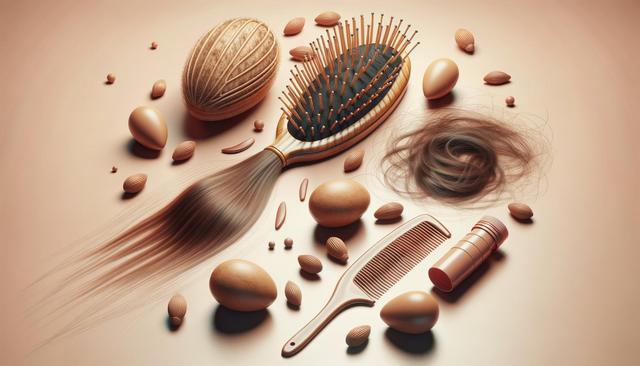Understanding the Root Causes of Hair Loss
Hair loss can occur for a variety of reasons, and identifying the underlying cause is critical to finding a suitable solution. Common causes include genetics, hormonal changes, nutritional deficiencies, stress, and medical conditions. For many individuals, hereditary hair loss, also known as androgenetic alopecia, is a major contributor. This condition often runs in families and typically progresses slowly over time. Hormonal imbalances, particularly those related to thyroid function or pregnancy, can also lead to temporary or long-term shedding.
Other contributing factors include:
- Poor diet lacking essential vitamins and minerals
- Excessive use of heat styling tools or harsh chemical treatments
- Scalp infections or inflammatory conditions like psoriasis
- Medications, including those for blood pressure, depression, or chemotherapy
Understanding these triggers allows individuals to take targeted steps toward addressing the issue, whether through lifestyle changes, medical treatment, or a combination of both.
Nutrition and Lifestyle Changes That Support Hair Health
One of the most effective ways to support healthy hair growth is through proper nutrition and a balanced lifestyle. Hair follicles, like any other part of the body, require a steady supply of nutrients to function optimally. A diet rich in protein, iron, zinc, and vitamins A, C, D, and E can significantly improve hair strength and reduce shedding. Including omega-3 fatty acids from sources like fish, flaxseeds, and walnuts can also nourish the scalp and promote hair density.
Here are a few practical changes to incorporate:
- Stay hydrated to maintain skin and scalp health
- Reduce intake of processed foods and sugar
- Incorporate leafy greens, legumes, and whole grains into daily meals
- Engage in regular physical activity to reduce stress and improve circulation
Stress management is another important factor. High stress levels can trigger a type of hair loss called telogen effluvium, where more follicles than usual enter the resting phase. Practicing mindfulness, yoga, or deep breathing exercises can support emotional well-being and, by extension, hair health.
Exploring Medical Treatments and Professional Therapies
For those experiencing significant or persistent hair loss, medical treatments may offer relief. Consulting a dermatologist or trichologist can help in diagnosing the problem and recommending appropriate therapies. Common medical treatments include topical applications, oral medications, injectable treatments, and light-based therapies. These treatments can stimulate hair follicles, improve scalp health, and slow the progression of hair loss.
Popular professional options include:
- Topical minoxidil solutions that enhance blood flow to the scalp
- Oral medications that regulate hormone levels
- Platelet-rich plasma (PRP) therapy, which uses the patient’s own blood to promote healing and growth
- Low-level laser therapy (LLLT) that stimulates follicles using light energy
Each of these options has varying levels of effectiveness depending on the individual’s condition, and it’s crucial to follow a healthcare provider’s guidance for the safest and most effective results.
Natural Remedies and Scalp Care Practices
In addition to medical treatments, many individuals explore natural remedies and improved scalp care as complementary approaches. While scientific evidence for some natural solutions is limited, many users report noticeable benefits when they are part of a consistent care routine. Essential oils like rosemary, peppermint, and tea tree oil are often used in diluted forms to massage the scalp and potentially stimulate blood flow.
Effective scalp care routines may include:
- Regular gentle scalp massages to increase circulation
- Using sulfate-free shampoos that don’t strip natural oils
- Exfoliating the scalp occasionally to remove buildup
- Applying nourishing oils like coconut or castor oil weekly
Maintaining a clean and well-moisturized scalp can also help reduce inflammation and create an environment conducive to hair growth. However, it’s important to patch test natural products before full application to avoid irritation or allergic reactions.
When to Seek Professional Help
While mild hair shedding is normal, especially during seasonal changes or after illness, excessive or sudden hair loss may indicate a more serious issue. If you notice bald patches, rapid thinning, or significant changes in hair texture, it’s advisable to consult a healthcare professional. Early intervention often leads to more favorable outcomes.
In some instances, hair loss may be a symptom of an underlying medical condition such as:
- Autoimmune disorders like alopecia areata
- Thyroid dysfunction
- Iron-deficiency anemia
- Hormonal imbalances related to PCOS or menopause
Professional evaluation may include blood tests, scalp biopsies, or digital imaging to assess follicle health. Based on the findings, a personalized treatment plan can be developed that may include a combination of therapies, lifestyle guidance, and ongoing monitoring.
Conclusion: Taking Control of Your Hair Health Journey
Dealing with hair loss can be challenging, but with the right knowledge and resources, many people can take meaningful steps toward improvement. Whether through nutritional changes, medical treatments, or natural remedies, it’s possible to support healthier hair and regain confidence. The key is to approach the issue with patience, consistency, and professional guidance when necessary. Remember, every individual’s hair journey is unique, and finding what works for you might take time—but positive change is well within reach.




Leave a Reply